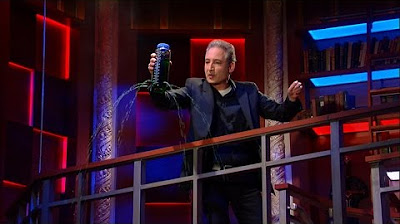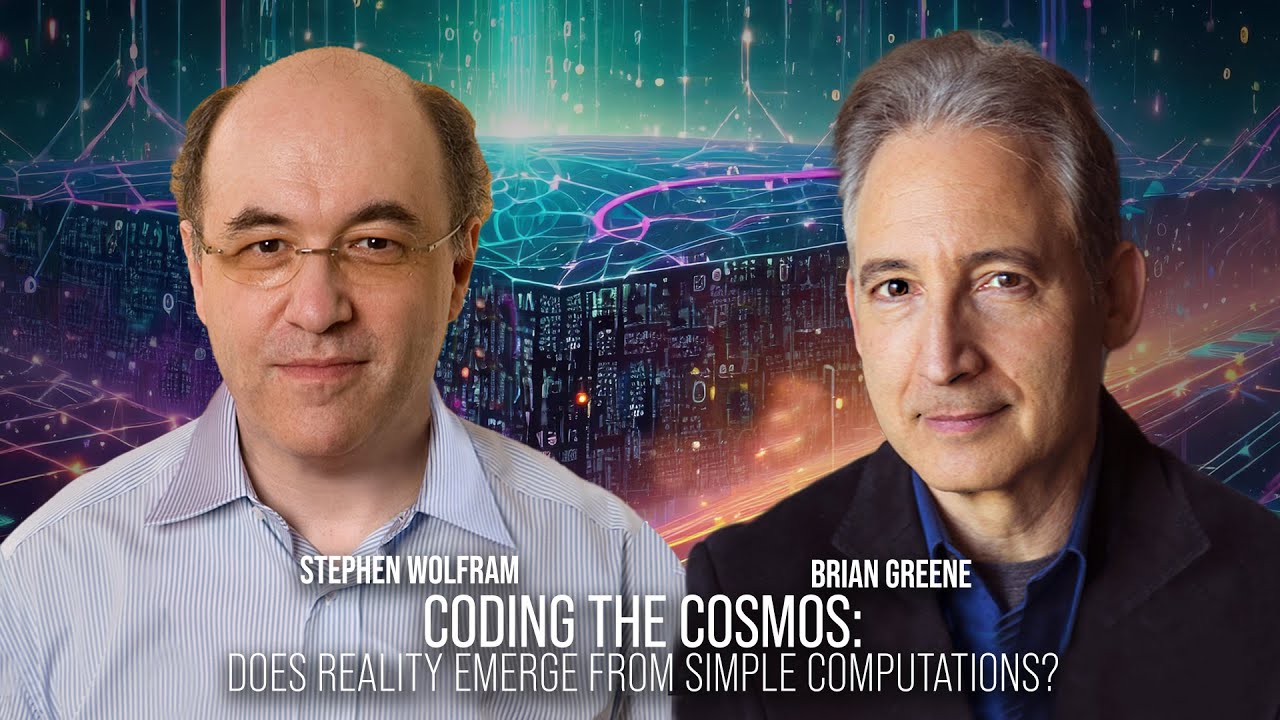Gravitational Waves: A New Era of Astronomy Begins
TLDRThe 2016 World Science Festival featured a discussion on the groundbreaking detection of gravitational waves, a phenomenon predicted by Einstein's general theory of relativity. Brian Greene introduced the panel, including Rai Weiss, Barry Barish, Nergis Mavalvala, Frans Pretorius, and David Shoemaker, who collectively contributed to this monumental scientific achievement. The conversation contextualized the discovery, comparing its rarity and significance to that of the Higgs boson, and delved into the theoretical and experimental journey that led to confirming the existence of these space-time ripples.
Takeaways
- 🌟 The World Science Festival hosted a program on gravitational waves, which was a timely topic following the first direct detection announcement on February 11, 2016.
- 🔍 Brian Greene, co-founder of the festival, emphasized the rarity and significance of such a discovery in fundamental science, comparing it to the Higgs boson discovery.
- 🌌 The script discusses the historical context of gravitational waves, which were theoretically predicted by Einstein in 1916 as ripples in the fabric of spacetime.
- 🔧 Einstein initially made a mistake in his calculations regarding gravitational waves, which he later corrected, and his evolving relationship with the concept was complex.
- 📚 The script highlights the perseverance and dedication of the scientific community, particularly those involved in the LIGO project, in pursuing the detection of gravitational waves.
- 🌐 The detection of gravitational waves was considered an enormous challenge due to the minuscule effects these waves have on spacetime, requiring highly sensitive equipment.
- 🛠️ Rai Weiss of MIT is credited as one of the creators of LIGO, having proposed the large-scale interferometer concept in 1972 and leading the project since then.
- 🏛️ Barry Barish of Caltech is noted for his instrumental role in saving LIGO during its transition to a large-scale scientific project and overseeing the construction of the detectors.
- 🏆 Nergis Mavalvala, an astrophysicist at MIT and a genius award winner, is recognized for her work on LIGO and her contributions to the understanding of gravitational waves.
- 📈 Frans Pretorius, a professor at Princeton University, is highlighted for his expertise in general relativity and numerical solutions to Einstein's equations, crucial for the discovery.
- 💡 David Reitze, director of the MIT LIGO lab, led the team that upgraded the technology of the observatory, which was pivotal for the detection of gravitational waves.
Q & A
Who is Brian Greene and what is his role at the 2016 World Science Festival?
-Brian Greene is a co-founder of the World Science Festival and he served as the host for the program on gravitational waves during the 2016 event.
What significant scientific discovery was announced on February 11, 2016?
-The significant scientific discovery announced on February 11, 2016, was the first direct detection of gravitational waves.
What is the historical context of the gravitational waves discovery in relation to other scientific achievements?
-The discovery of gravitational waves is considered a milestone in fundamental science, on par with the discovery of the Higgs boson, which was a major achievement in particle physics.
What was the general consensus on the existence of gravitational waves before their direct detection?
-After the 1950s and 1960s, there was a general consensus among scientists that gravitational waves were a real feature of Einstein's general theory of relativity, but there was controversy over whether they could ever be detected.
What is the metaphor used to describe the concept of gravity according to Einstein's general theory of relativity?
-The metaphor used is that of a trampoline, where heavy objects like the sun warp the surface of space-time, causing other objects to move along specific trajectories.
What was the first evidence supporting Einstein's general theory of relativity?
-The first evidence was the explanation of the precession of Mercury's orbit, which could not be explained by Newtonian gravity but was accurately predicted by Einstein's theory.
What was the second piece of evidence supporting Einstein's theory, and how was it obtained?
-The second piece of evidence was the bending of light by the sun, which was observed during a solar eclipse and compared with photographs taken six months earlier.
Who is Rai Weiss and what is his contribution to the field of gravitational waves?
-Rai Weiss is one of the creators of LIGO and has been a scientific and engineering leader since he first proposed the large-scale interferometer in 1972.
What is the significance of Barry Barish's role in the LIGO project?
-Barry Barish is credited with saving LIGO during its transition into a large-scale science project and overseeing the construction of the two large detectors in Louisiana and Washington state.
Who is Nergis Mavalvala and what recognition did she receive for her work on LIGO?
-Nergis Mavalvala is an astrophysicist at MIT, recognized as a genius award winner for her work on LIGO in 2010.
What is the primary research focus of Frans Pretorius and how did it contribute to the discovery of gravitational waves?
-Frans Pretorius is a professor of physics at Princeton University, specializing in numerical solutions to Einstein's equations. His work in general relativity was a vital part of the discovery of gravitational waves.
Who is David Reitze and what was his role in the advancement of LIGO?
-David Reitze is the executive director of the MIT LIGO lab and was the team leader of Advanced LIGO, responsible for many years of technology upgrades to the observatory.
Outlines
🌌 Introduction to the 2016 World Science Festival and Gravitational Waves
Brian Greene, co-founder of the World Science Festival, welcomes the audience to the fourth day of the 2016 festival, focusing on the groundbreaking topic of gravitational waves. He acknowledges the recent announcement of their first direct detection, an event as significant as the discovery of the Higgs boson. Greene emphasizes the rarity and importance of such scientific achievements and introduces the panelists who contributed to this discovery. He also sets the stage for the discussion by explaining the historical context and the scientific significance of Einstein's general theory of relativity, which predicted the existence of gravitational waves. The paragraph concludes with a brief mention of Einstein's theory and its initial validation through the perihelion of Mercury and the bending of light.
🔭 Einstein's General Relativity and the Prediction of Gravitational Waves
The script delves into Einstein's general theory of relativity, which revolutionized our understanding of gravity by describing it as the warping of space-time by massive objects. It discusses how Einstein's equations predicted the precession of Mercury's orbit, a phenomenon unexplained by Newtonian physics, and the bending of light by the sun, both of which were later confirmed by observations. The paragraph also highlights Einstein's prediction of gravitational waves as ripples in the fabric of space-time, which he initially doubted but were later confirmed by others. The challenges of detecting these waves due to their minuscule effects on space-time are also mentioned, leading into the discussion of the LIGO experiment and its role in the detection of gravitational waves.
👩🔬 Meet the Panelists: Pioneers in Gravitational Wave Detection
The script introduces the panelists who will discuss the detection of gravitational waves. Rai Weiss, one of the creators of LIGO and a key figure since its inception, is highlighted for his pioneering work in large-scale interferometry. Barry Barish is recognized for his instrumental role in transforming LIGO into a major scientific project and overseeing the construction of the detectors. Nergis Mavalvala, a天才奖获得者 and expert in LIGO, is acknowledged for her contributions to the project. Frans Pretorius, a specialist in numerical solutions to Einstein's equations, is introduced for his vital role in the discovery. Lastly, David Reitze, the director of the MIT LIGO lab, is praised for leading the upgrade to advanced LIGO technology. Each panelist's background and contributions to the field of gravitational wave detection are outlined, setting the stage for a comprehensive discussion on the topic.
Mindmap
Keywords
💡Gravitational Waves
💡World Science Festival
💡Einstein's General Theory of Relativity
💡Higgs Boson
💡LIGO
💡Rai Weiss
💡Barry Barish
💡Nergis Mavalvala
💡Frans Pretorius
💡David Reitze
💡Spacetime
Highlights
Brian Greene introduces the World Science Festival and the significance of the first direct detection of gravitational waves.
The discovery of gravitational waves is compared to the discovery of the Higgs boson, marking a rare and fundamental achievement in science.
The historical context of the discovery is provided, emphasizing the long-standing theoretical prediction and the controversy over detection capabilities.
The importance of internal fortitude and vision for the scientists who devoted their lives to the project of detecting gravitational waves is highlighted.
Albert Einstein's general theory of relativity and its introduction of a new theory of gravity is explained.
Einstein's theory of relativity is confirmed through the explanation of Mercury's orbit and the bending of light by the sun.
Einstein's prediction of gravitational waves as ripples in the fabric of space is discussed, including his initial mistake and correction.
The development of a systematic framework to understand gravitational waves and the certainty of their existence is mentioned.
The practical implications of gravitational waves, such as the stretching and squeezing of objects in their wake, are described.
The immense challenge of detecting gravitational waves due to their minuscule effects is emphasized.
Rai Weiss of MIT is introduced as one of the creators of LIGO and a key figure in the detection of gravitational waves.
Barry Barish of Caltech is credited with saving LIGO and overseeing the construction of the large-scale detectors.
Nergis Mavalvala's contributions to LIGO and her recognition as a genius award winner are acknowledged.
Frans Pretorius's work in numerical solutions of Einstein's equations and its vital role in the discovery is highlighted.
David Schoemaker's role as the director of the MIT LIGO lab and leader of advanced LIGO is introduced.
The panelists' discussion on the detection of gravitational waves and the technological advancements of LIGO is anticipated.
Transcripts
Browse More Related Video

Unifying Nature’s Laws: The State of String Theory

Brian Greene Explains That Whole General Relativity Thing

Coding the Cosmos: Does Reality Emerge From Simple Computations?

Black Holes and the Fundamental Laws of Physics - with Jerome Gauntlett

Beyond Higgs: The Wild Frontier of Particle Physics

Beyond Einstein: Gravitational Echoes
5.0 / 5 (0 votes)
Thanks for rating: